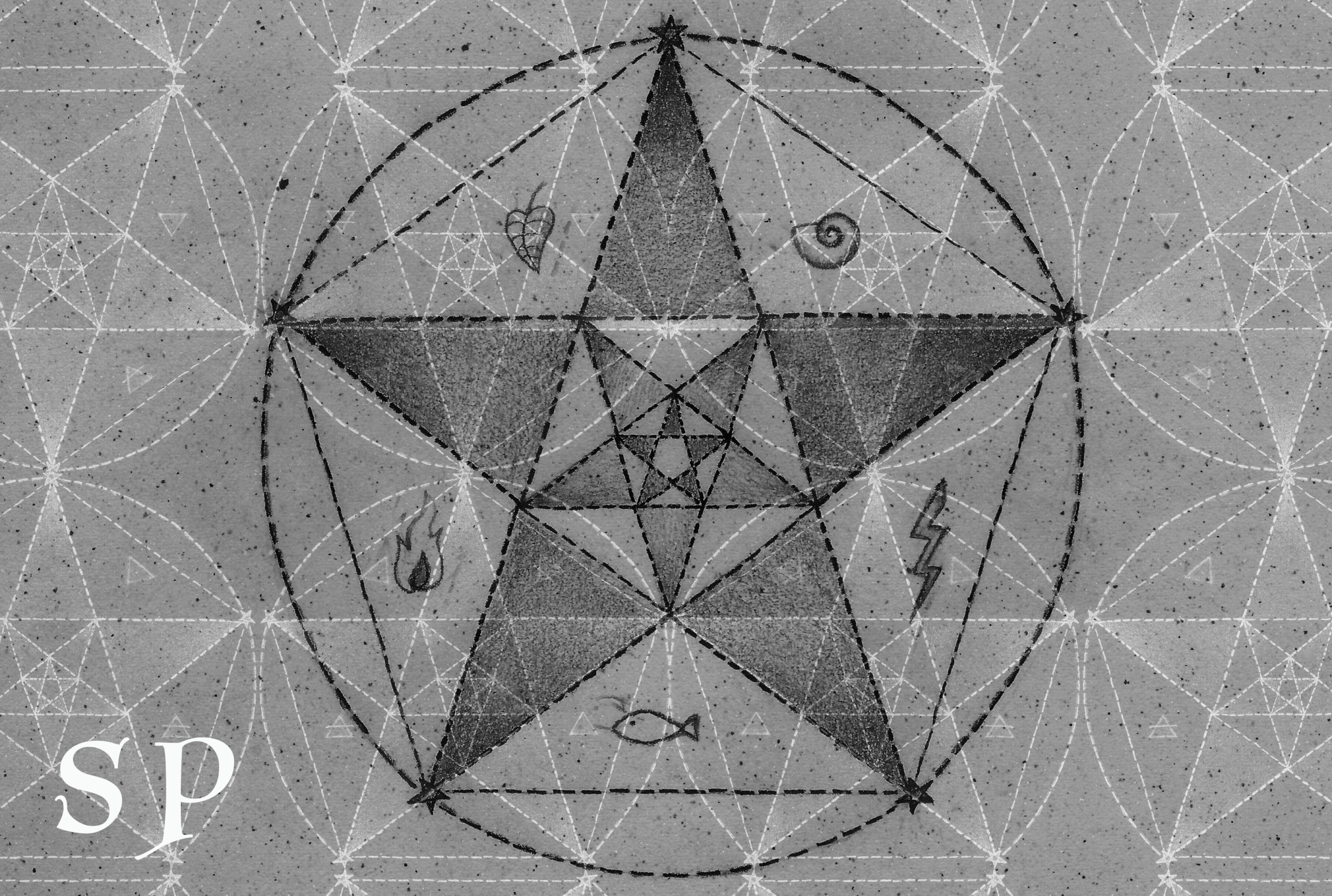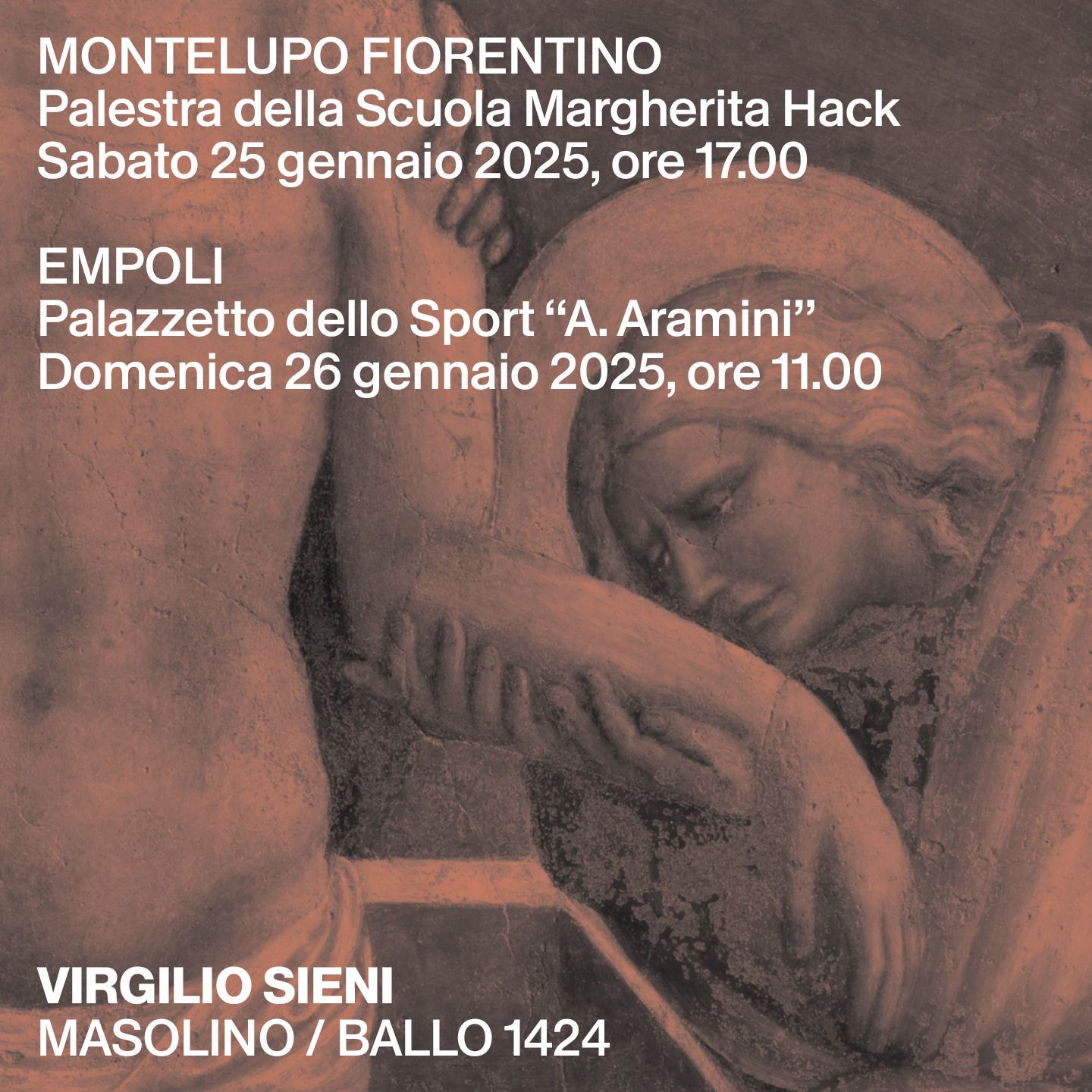
INGRESSO GRATUITO SU PRENOTAZIONE
𝗜𝗻𝗳𝗼 𝗲 𝗽𝗿𝗲𝗻𝗼𝘁𝗮𝘇𝗶𝗼𝗻𝗶: e-mail accademia@virgiliosieni.it / tel. +39 055 2280525 / whatsapp: +39 331 2922600
𝗢𝗳𝗳𝗶𝗰𝗶𝗻𝗲 𝗱𝗲𝗹 𝗚𝗲𝘀𝘁𝗼/𝗣𝗶𝗰𝗰𝗼𝗹𝗶 𝗠𝘂𝘀𝗲𝗶 𝟮𝟬𝟮𝟰
Un progetto di Virgilio Sieni
❖ 𝗠𝗔𝗦𝗢𝗟𝗜𝗡𝗢/𝗕𝗔𝗟𝗟𝗢 𝟭𝟰𝟮𝟰
Siamo lieti di invitarvi alla performance conclusiva del progetto MASOLINO/BALLO 1424: gruppi di cittadine e cittadini, danzatori, ospiti delle RSA, dopo un ciclo di incontri pratici sul gesto a cura del coreografo Virgilio Sieni, si incontrano per dar vita ad un grande adagio sulle “note” dettate dai gesti della 𝘗𝘪𝘦𝘵𝘢̀ di Masolino da Panicale, oggi conservata al Museo della Collegiata di Sant’Andrea di Empoli. Con la partecipazione della Pia Società Corale Santa Cecilia di Empoli, diretta da Simone Faraoni.
La stessa performance si svolgerà:
𝗠𝗢𝗡𝗧𝗘𝗟𝗨𝗣𝗢 𝗙𝗜𝗢𝗥𝗘𝗡𝗧𝗜𝗡𝗢
𝗦𝗮𝗯𝗮𝘁𝗼 𝟮𝟱 𝗴𝗲𝗻𝗻𝗮𝗶𝗼, 𝗼𝗿𝗲 𝟭𝟳
Palestra della Scuola Margherita Hack, Via Del Parco, 23 (ingresso da Via di Banchino)
𝗘𝗠𝗣𝗢𝗟𝗜
𝗗𝗼𝗺𝗲𝗻𝗶𝗰𝗮 𝟮𝟲 𝗴𝗲𝗻𝗻𝗮𝗶𝗼, 𝗼𝗿𝗲 𝟭𝟭
Palazzetto dello Sport “A. Aramini”, Via delle Olimpiadi, 17
𝘊𝘰𝘳𝘦𝘰𝘨𝘳𝘢𝘧𝘪𝘢 𝘦 𝘴𝘱𝘢𝘻𝘪𝘰 Virgilio Sieni
𝘈𝘴𝘴𝘪𝘴𝘵𝘦𝘯𝘻𝘢 𝘢𝘳𝘵𝘪𝘴𝘵𝘪𝘤𝘢 Andrea Bianca Maragliano, Mara Roberto
𝘊𝘰𝘯 𝘭𝘢 𝘱𝘢𝘳𝘵𝘦𝘤𝘪𝘱𝘢𝘻𝘪𝘰𝘯𝘦 𝘥𝘦𝘭𝘭𝘦 𝘤𝘪𝘵𝘵𝘢𝘥𝘪𝘯𝘦/𝘪 𝘥𝘪 𝘌𝘮𝘱𝘰𝘭𝘪 Patrizia Bagnoli, Lino Bandini, Simone Bellucci, Francesca Benedetti, Elisa Bertagnini, Simone Bruscoli, Mariella Bulleri, Silvia Cecchi, Ecaterina Constantinova, Fabio Romano Cremonesi, Maria Erica Giacomozzi, Sara Giacomozzi, Chiara Lovaglio, Michela Pagni, Donato Petrizzo, Antonella Tanzini, Ilenia Tozzo, Maria Pia Zompa 𝘦 𝘥𝘪 𝘔𝘰𝘯𝘵𝘦𝘭𝘶𝘱𝘰 𝘍𝘪𝘰𝘳𝘦𝘯𝘵𝘪𝘯𝘰 Silvia Paola Bazoli, Luisa Bugetti, Sabrina Frizzera, Alice Giuliani, Giovanni Lenzi, Ilaria Marini, Silvana Dora Monda, Federica Padariso, Anna Pancani, Manuela Priori, Elena Romiti, Paola Rosadini, Gianluca Rossi, Serena Tani 𝘦 𝘥𝘦𝘨𝘭𝘪 𝘰𝘴𝘱𝘪𝘵𝘪 𝘦 𝘰𝘱𝘦𝘳𝘢𝘵𝘰𝘳𝘪 𝘙𝘚𝘈 𝘊𝘩𝘪𝘢𝘳𝘶𝘨𝘪 𝘥𝘪 𝘌𝘮𝘱𝘰𝘭𝘪 Maria Berardi, Nelly Boschi, Luca Carli Ballola, Luciana Fulignati, Luigia Marini, Sandra Matini, Sonia Milani, Marisa Paramini, Sauro Scardigli, Laura Trapani 𝘦 𝘰𝘴𝘱𝘪𝘵𝘪 𝘦 𝘰𝘱𝘦𝘳𝘢𝘵𝘰𝘳𝘪 𝘙𝘚𝘈 𝘐𝘭 𝘊𝘢𝘴𝘵𝘦𝘭𝘭𝘰 𝘥𝘪 𝘔𝘰𝘯𝘵𝘦𝘭𝘶𝘱𝘰 𝘍𝘪𝘰𝘳𝘦𝘯𝘵𝘪𝘯𝘰 Sara Alterini, Vera Bellucci, Maria Luisa Botticelli, Inge Dilthey, Giulia Giani, Daniele Mangani, Silvana Marcantelli, Silvia Melani, Giovannina Miciletta, Patrizia Piattoli, Rosa Roccaforte
𝘊𝘰𝘯 𝘭𝘢 𝘱𝘢𝘳𝘵𝘦𝘤𝘪𝘱𝘢𝘻𝘪𝘰𝘯𝘦 𝘥𝘪 Lorenzo Bonifazi, Riccardo Campani, Jessica De Masi, Stefania Puntaroli e 𝘤𝘰𝘯 𝘭𝘢 𝘱𝘢𝘳𝘵𝘦𝘤𝘪𝘱𝘢𝘻𝘪𝘰𝘯𝘦 𝘥𝘦𝘭𝘭𝘢 Pia Società Corale Santa Cecilia di Empoli
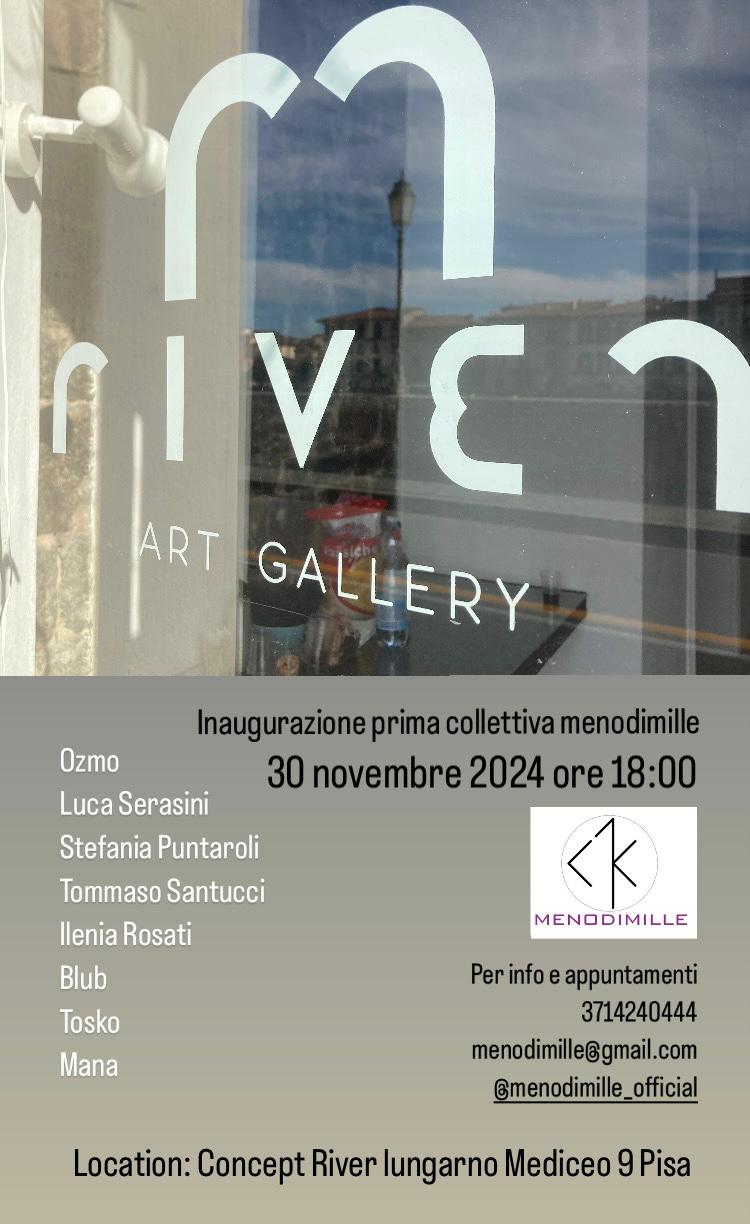
Vernissage sabato 30 novembre, dalle 18:00, presso la Galleria Concept River, dove esporrò opere grafiche durante per la prima edizione di Menodimille Art Fair, mostra di arte contemporanea.
L’evento presenterà una collettiva di otto artisti scelti con cura dal comitato del movimento Menodimille: Ozmo, Luca Serasini, Blub, Stefania Puntaroli, Luca “MANA” Davini, Stefano “TOSKO” Casigliani, Ilenia Rosati e Tommaso Santucci.
Menodimille nasce con una duplice missione: da un lato, offrire visibilità ad artisti che desiderano esprimersi in modo autentico e senza compromessi; dall’altro, avvicinare il pubblico all’arte, permettendo di vedere, sentire e, se lo si desidera, acquistare opere autentiche, in cui l’artista lascia una parte di sé, molto più di un semplice oggetto di consumo. Come suggerisce il nome, tutte le opere saranno in vendita a meno di mille euro, per rendere l’arte accessibile a un pubblico ampio e coinvolgere anche chi solitamente si sente distante o intimidito dal mondo delle gallerie.
La mostra resterà aperta fino al 24 dicembre con i seguenti orari: da lunedì a giovedì su appuntamento, e sabato e domenica dalle 15:00 alle 20:00. Per fissare un appuntamento, potete scrivere a menodimille@gmail.com o contattare Matteo al 3714240444 o Sara al 3289320007.
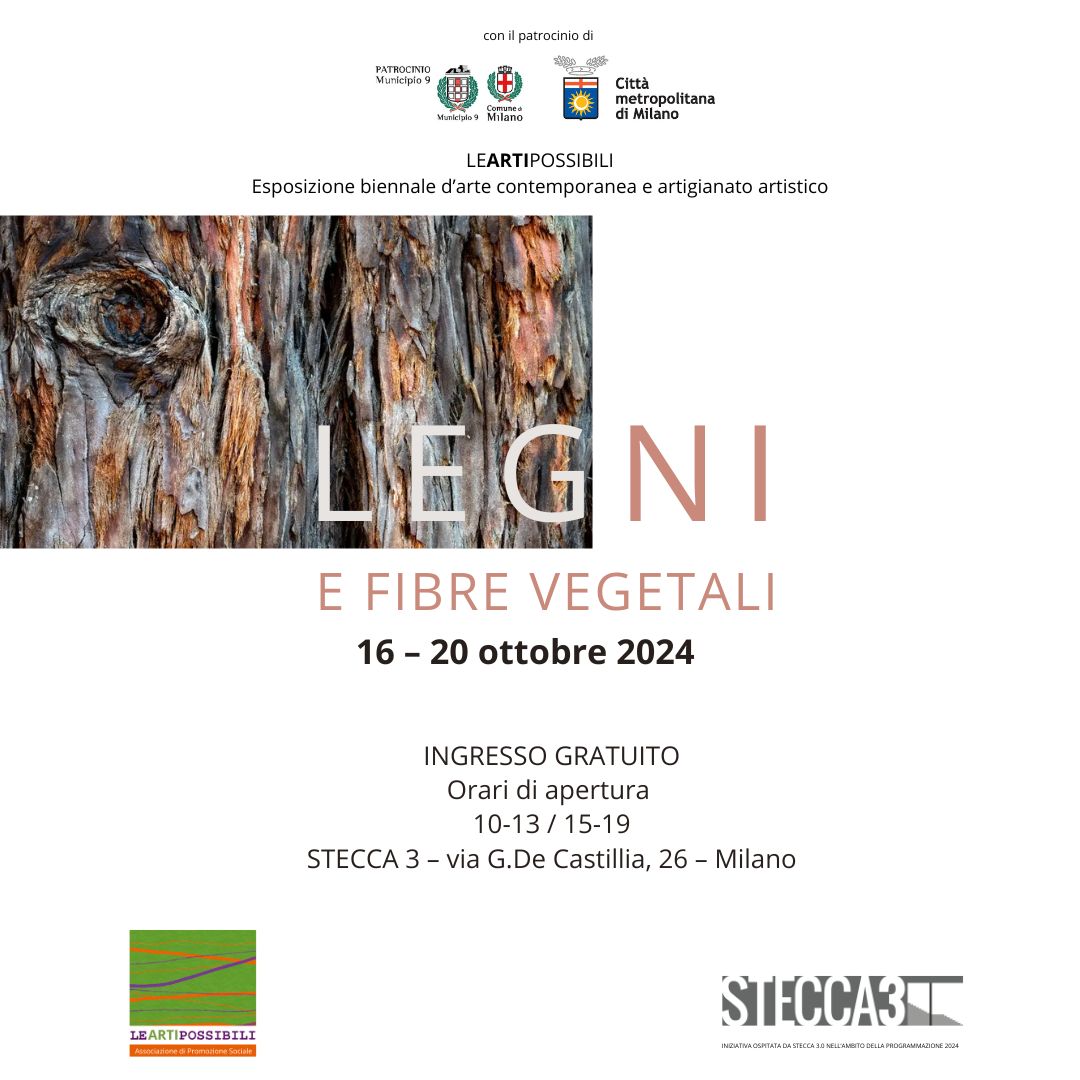
Saturday 12 October from 11:00 to 20:00 Home Studio Stefania Puntaroli via Enrico Petrella, 11 Firenze
RISONANZE FRATTALI– quando le forme frattali danzano con i suoni/ FRACTAL RESONANCES – When fractal shapes dance with sounds
Risonanze Frattali è un evento performativo che unisce opere frattali e musica frattale, offrendo un’esperienza multisensoriale unica. La casa-studio d’artista di Stefania Puntaroli diventa un laboratorio creativo, dove i visitatori possono esplorare il processo artistico e ammirare disegni, sculture, stampe e pitture. Le opere, ispirate alla teoria frattale e alla progressione di Fibonacci, si intrecciano con la musica del fagottista Stefano Vicentini, creando un dialogo armonioso tra suono e forma. Un elemento chiave è il broccolo romano, simbolo della ripetizione frattale su diverse scale.
Fractal Resonances is a performance event that combines fractal works and fractal music, offering a unique multi-sensory experience. Stefania Puntaroli’s artist’s home-studio becomes a creative laboratory, where visitors can explore the artistic process and admire drawings, sculptures, prints and paintings. The works, inspired by fractal theory and the Fibonacci progression, intertwine with the music of bassoon player Stefano Vicentini, creating a harmonious dialogue between sound and form. A key element is the Roman broccoli, a symbol of fractal repetition on different scales.
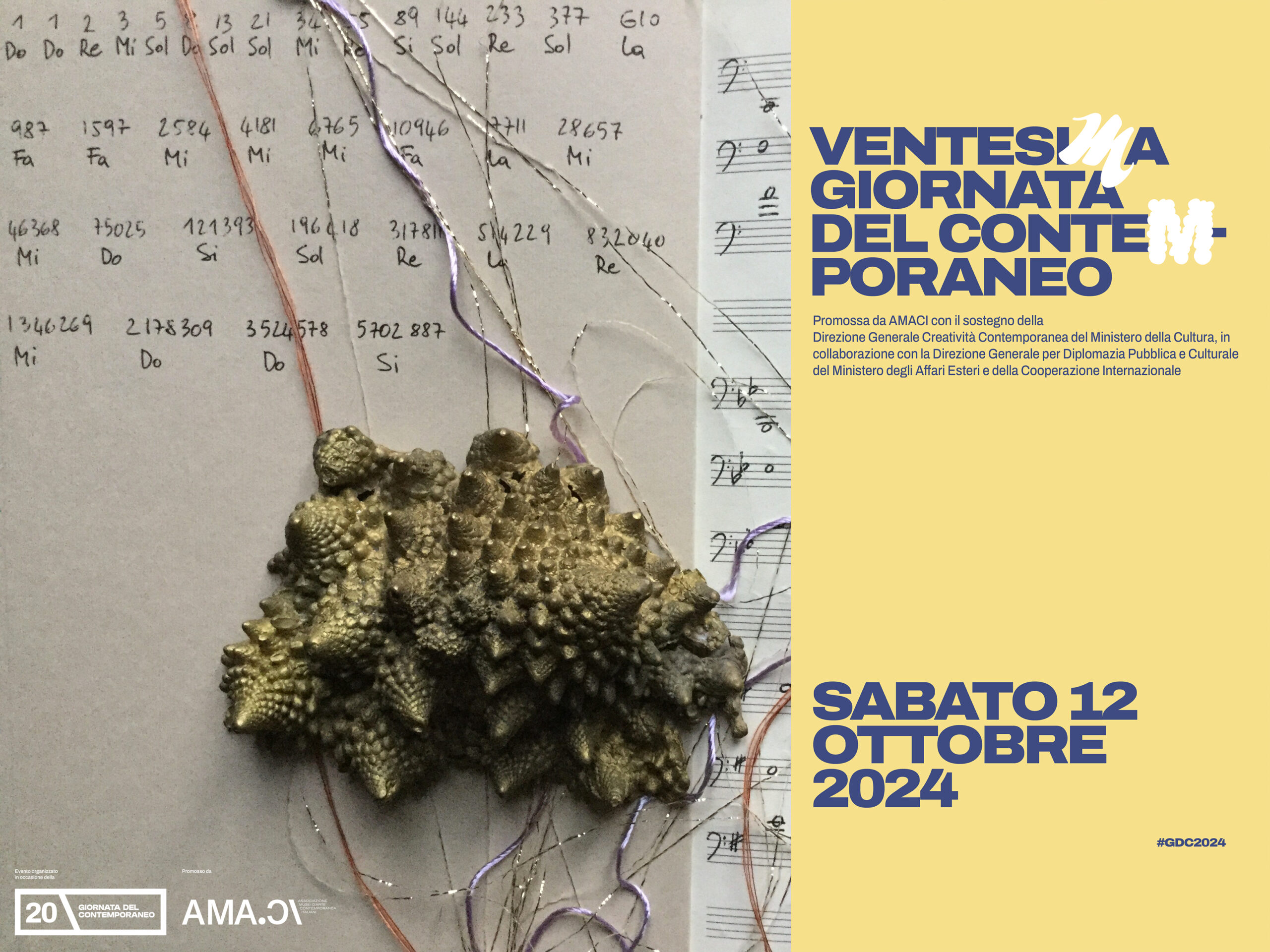
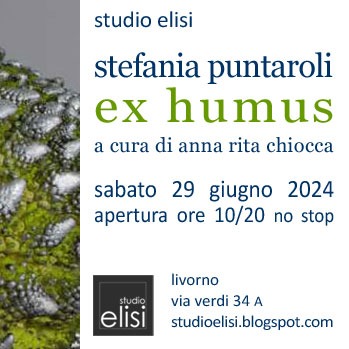
Ex humus Testo di Anna Rita Chiocca
Recentemente Stefania Puntaroli ha pubblicato Fantastika. Il libro è una selezione ragionata dei progetti dell’artista a partire da Creatures 1995, per arrivare ad include le opere presentate in Ex Humus, esposizione pensata per lo Studio Elisi, ultima di una successione di mostre realizzate negli ultimi mesi attorno a concetti cari all’artista. Introdotto da un testo critico di Valerio Dehò, ha come contrappunto esemplificativo riflessioni su progettazione, ideazione delle opere della stessa Puntaroli combinate con estratti da testi critici che hanno accompagnato il lavoro negli anni.
Ci incontriamo a Villa Caruso Bellosguardo, dove ha in corso la mostra Coclea, per fissare alcuni concetti per Ex humus e decidere quali opere esporre. Mi illustra lavori allestiti, realizziamo dei selfie allo specchio frattale esposto nello splendido giardino, facciamo considerazioni sull’arte, parliamo dei lavori e subito viene fuori la sua personalità esuberante. Stefania Puntaroli ha il dono di attivare negli interlocutori una certa leggerezza, una curiosità giocosa capace ricollegare essere umano e natura, mondo esterno e interiorità pronta a tradursi in riflessioni sull’esistenza. In tutti i progetti che siano disegni, performance, azioni relazionali, sperimentazioni plastiche l’attrazione per il mostruoso degli esordi, l’interesse per la natura, le più recenti affiliazioni scientifiche vengono continuamente mescolati al fine di dare forma ad una realtà dai confini sfrangiati.
<<Per me creare è come meditare… Trasformare parti della natura in microcosmi fantastici è la cosa che mi rende più felice.>>
Dopo gli studi all’Accademia d’arte di Firenze e una specializzazione in incisione alla Scuola internazionale per la grafica d’arte Il Bisonte realizza una serie di progetti i cui soggetti sono creature fantastiche, figure nate dall’inconscio più profondo che irrompono nell’arte nella forma del mostruoso. Nella serie Malocchiosauri 1996, gli innocui mostri realizzati con matite colorate e ecoline sono il prodotto dell’assemblaggio di animali differenti; in Abissus 2006, le creature sono piccole entità provenienti da lontani mondi subacquei, in Changing eyes 2007, ci troviamo al cospetto di piccoli freak costituiti da un solo grande occhio.
Tratto raffinato nel disegno, capacità tecnica indubbia non le impediscono negli anni successivi di esplorare altri territori, discostandosi da questi soggetti per entrare direttamente in zone più complesse del perturbante. Dopo una serie di esperienze tradizionali nella grafica, incontri con artisti che praticano medium differenti, progetti residenziali in diversi paesi i suoi interessi si ampliano alla performance, alle azioni relazionali a cui somma tecniche e materiali inusuali. Mescola i medium, amplia la sua immaginazione senza schemi.
<<Inizio a scrivere, disegnare e poi sopraggiunge la necessità di indossare i dipinti e portarli in viaggio: nasce la necessità di creare e far vivere un’opera anche fuori dal suo contesto usuale. In alcune delle mie performance c’è l’assoluto desiderio di dipingermi addosso, assaporare la pittura sulla mia pelle, come se il supporto cartaceo non bastasse più…>>
A partire da un opera del 2011 Book fractal, olio, bitume, plastica su tela e Primo libro F1 graffite su carta ha origine Frattali, un progetto in progress sostenuto dall’idea che tutto è correlato secondo uno schema matematico. Si affida alla progressione di Fibonacci e alla teoria geometrica frattale per la quale un oggetto geometrico si ripete nella sua forma allo stesso modo su scale diverse, nella certezza di un tutto globale nel quale l’infinitamente piccolo si relaziona all’infinitamente grande secondo uno schema di crescita rassicurante nonostante un caos creativo assolutamente incontrollabile, aperto a differenti pratiche, sperimentazioni di materiali e medium. La teoria scientifica permetta all’artista di muoversi tra le varie pratiche con disinvoltura ed esprimere connessione tra immaginazione e realtà, dando all’immaginazione uno spazio infinito. I mondi Frattali prendono corpo nei disegni, delle azioni performative, nelle sculture. Tra i materiali utilizzati ad un certo punto entra in gioco la Brassica oleracea italica conosciuta come broccolo romano. Questo vegetale rappresenta perfettamente in natura la teoria frattale, ogni sua forma si ripete allo stesso modo su scale diverse, ogni singola rosetta del broccolo ha la forma di un intero broccolo. Utilizzato da Stefania come matrice per incisioni, per stampi, come soggetto fotografico o come struttura di partenza per altre sculture, nelle performance, nelle azioni relazionali è forma da cui far nascere tutte le altre forme. Frattali sono anche i rami di larice intrecciati o le carte veline disegnate a china, a penna, a filo da cucito dei Legami fino alle stoffe sepolte di Legami frattali esposte per la prima volta in questa mostra.
Ex humus è uno degli infiniti punti di vista sull’universo frattale in progress costruito dall’artista. Stefania restituisce nello spazio dello Studio Elisi opere sul rapporto di seduzione che la natura esercita sull’essere umano contemporaneo. E’ l’inizio di un viaggio verso la conoscenza interiore guardando all’universo tutto. Il mezzo utilizzato è l’ideazione fuori dagli schemi propria dell’invenzione attraverso l’utilizzo di materiali più vari. La carta velina usata nella sartoria, come imballaggio per alimenti nella serie Legami è supporto per i disegni frattali a penna, filo da cucito, china, pittura metallica; il chewing gum combinato al glitter è utilizzato come materiale plastico per dare forma ai micro mondi Happy fractal; combinazioni ibride tra frammenti di minerali e calchi di broccolo romanesco realizzati con cera d’api o ceramica costituiscono la serie Mineral fractal. Per certi versi, il lavoro più dark è Legami frattali. Privi di guida, Stefania ci conduce ancora nei luoghi più profondi del sentire senza fare ricorso alla rappresentazione e alle pratiche tradizionali. Una decina di anni fa ha sepolto in una foresta pezze di stoffa, foulard. Sotto terra li ha lasciati macerare. Recuperati in tempi diversi, nei loro vari stadi di degrado, li ha sistemati ciascuno a seconda della loro condizione: alcuni in scatole di cartone con rami di larice, altri sospesi come sindoni. Tutti restituiti come spoglie. Materia, spazio e tempo si uniscono per dare forma a un Ex humus originario, ben lontano dal giocoso perturbante dell’innocuo mondo fantastico. La terra non serve per modellare ceramica, per incamiciare sculture, la terra è quella da cui muoviamo, a cui torneremo.
Stefania Puntaroli Ex humus
Text by Anna Rita Chiocca
Recently Stefania Puntaroli published Fantastika. The book is a reasoned selection of the artist’s projects beginning with Creatures 1995 and including the works presented in Ex Humus, an exhibition conceived for Studio Elisi, the last of a succession of exhibitions held in recent months around concepts dear to the artist. Introduced by a critical text by Valerio Dehò, it has as an illustrative counterpoint reflections on the design, conception of the works by Puntaroli herself combined with excerpts from critical texts that have accompanied the work over the years.
We meet at Villa Caruso Bellosguardo, where the Coclea exhibition is underway, to fix some concepts for Ex humus and decide which works to exhibit. She illustrates works set up for me, we take selfies at the fractal mirror displayed in the beautiful garden, we make considerations about art, we talk about the works, and immediately her exuberant personality comes out. Stefania Puntaroli has the gift of activating in interlocutors a certain lightness, a playful curiosity capable of reconnecting human being and nature, external world and interiority ready to translate into reflections on existence. In all projects whether they are drawings, performances, relational actions, plastic experiments the attraction to the monstrous of the beginnings, the interest in nature, the latest scientific affiliations are continuously mixed in order to shape a reality with frayed boundaries.
<<For me, creating is like meditating … Transforming parts of nature into fantastic microcosms is what makes me happiest.>>
After his studies at the Florence Academy of Art and a specialization in printmaking at the International School for Art Graphics Il Bisonte, he created a series of projects whose subjects are fantastic creatures, figures born from the deepest unconscious that burst into art in the form of the monstrous. In the series Malocchiosauri 1996, the harmless monsters made with colored pencils and echolines are the product of the assemblage of different animals; in Abissus 2006, the creatures are small entities from distant underwater worlds; in Changing eyes 2007, we are in the presence of small freaks consisting of one large eye.
Refined trait in drawing, undoubted technical ability do not prevent her in later years to explore other territories, departing from these subjects to enter directly into more complex areas of the uncanny. After a series of traditional experiences in graphic art, encounters with artists practicing different mediums, residential projects in different countries her interests expand to performance, relational actions to which she adds unusual techniques and materials. He mixes mediums, expands his imagination without patterns.
<<I start writing, drawing and then the need to wear paintings and take them on the road arises: the need to create and bring to life a work even outside its usual context. In some of my performances there is an absolute desire to paint on myself, to taste the painting on my skin, as if the paper support was no longer enough…>>
Starting with a 2011 work Book fractal, oil, bitumen, plastic on canvas and First Book F1 graffite on paper originated Fractals, an in-progress project sustained by the idea that everything is related according to a mathematical pattern. It relies on the Fibonacci progression and the fractal geometric theory for which a geometric object is repeated in its form in the same way on different scales, in the certainty of a global whole in which the infinitely small relates to the infinitely large according to a reassuring pattern of growth despite an absolutely uncontrollable creative chaos, open to different practices, experimentations of materials and mediums. Scientific theory allows the artist to move between practices with ease and express connection between imagination and reality, giving imagination an infinite space. Fractal worlds take shape in drawings, performance actions, and sculptures. Among the materials used at one point Brassica oleracea italica known as Roman broccoli comes into play. This vegetable perfectly represents in nature the fractal theory, each of its shapes repeats itself in the same way on different scales, each individual rosette of the broccoli has the shape of an entire broccoli. Used by Stefania as a matrix for carvings, for molds, as a photographic subject or as a starting structure for other sculptures, in performances, in relational actions it is form from which all other forms are born. Fractals are also the woven larch branches or the tissue papers drawn in ink, pen, and sewing thread of Legami up to the buried fabrics of Legami frattali shown for the first time in this exhibition.
Ex humus is one of the infinite viewpoints of the fractal universe in progress constructed by the artist. Stefania returns to the space of Studio Elisi works about the seductive relationship that nature exerts on the contemporary human being. It is the beginning of a journey toward inner knowledge by looking at the whole universe. The medium used is the out-of-the-box ideation proper to invention through the use of the most varied materials. Tissue paper used in tailoring, as food packaging in the Legami series is support for fractal pen drawings, sewing thread, India ink, metallic paint; chewing gum combined with glitter is used as a plastic material to shape the Happy fractal micro-worlds; hybrid combinations of mineral fragments and casts of Romanesco broccoli made with beeswax or ceramics constitute the Mineral fractal series. In some ways, the darkest work is Fractal Ties. Deprived of guidance, Stefania still leads us to the deepest places of feeling without resorting to traditional representation and practices. A decade ago she buried pieces of cloth, scarves, in a forest. Under the ground he left them to macerate. Recovered at different times, in their various stages of decay, he arranged them each according to their condition: some in cardboard boxes with larch branches, others suspended like shrouds. All returned as remains. Matter, space and time come together to shape an original Ex humus, far from the playful disturbance of the innocuous fantasy world. The earth is not for shaping pottery, for embedding sculptures, the earth is what we move from, what we will return to.
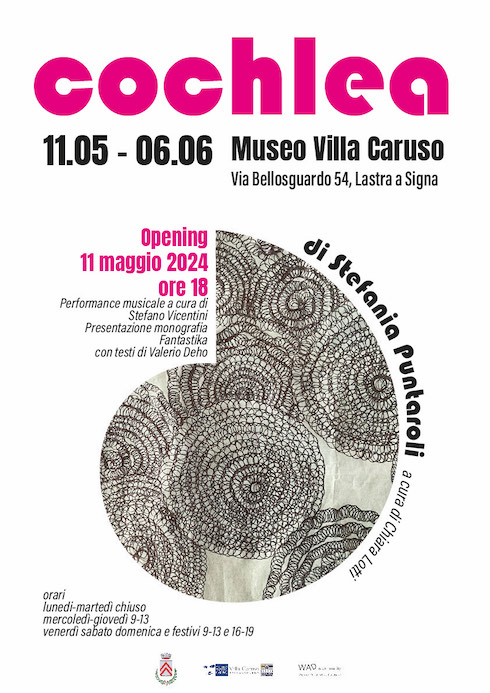
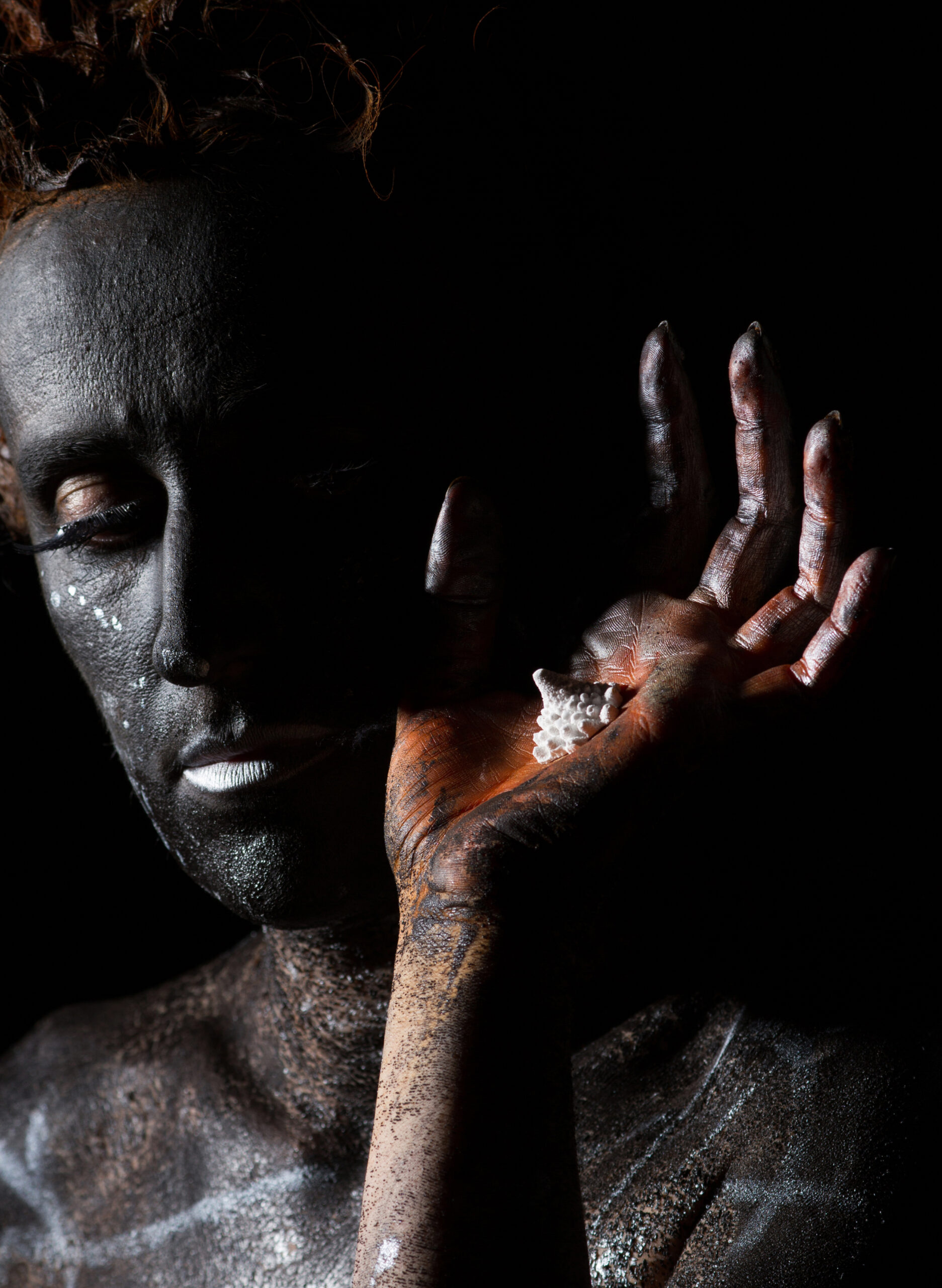
Sabato 11 maggio 2024 alle ore 18:00 presso il Museo Caruso di Lastra a Signa, si inaugura la personale Cochlea di Stefania Puntaroli, a cura di Chiara Lotti, visitabile fino al 6 giugno 2024. Cochlea si aprirà con la performance sonora di Stefano Vicentini che eseguirà musica frattale, legata alle opere dell’artista, e Una furtiva lagrima al fagotto. Seguirà la presentazione del libro Fantastika, opera monografica sull’artista con testo di Valerio Deho. Con la collaborazione di Woman Visual Artist Database.
La coclea, da cui prende il titolo l’esposizione, è una componente dell’orecchio responsabile dell’udito con una particolare forma a spirale. Cochlea è infatti il tentativo dell’artista di catturare le tracce del suono, di per sé invisibili. L’esposizione, allestita nel Museo Caruso, coinvolge ambienti del museo stesso, oltre che delle sale espositive e del parco. L’intento è di raffigurare la voce del grande Caruso che proprio in questa villa, cantò le arie più belle della nostra tradizione. La concrezione del suono e la forma a spirale sono i leitmotiv di tutto il corpus di opere in mostra tra cui la serie Legami: bozzetti su carta in cui, attraverso un pattern di ghirigori, si rende visivo il suono primordiale per poi rendersi materico attraverso sculture pensili in legno di larice. A completamento del percorso espositivo scatti fotografici e sculture frattali in cui si rendono tattili le onde del suono e la perfezione della struttura aurea. Chiara Lotti
The cochlea, from which the exhibition takes its title, is a component of the ear responsible for hearing with a distinctive spiral shape. Cochlea is in fact the artist’s attempt to capture the traces of sound, itself invisible. The exhibition, set up in the Caruso Museum, involves rooms in the museum itself, as well as exhibition rooms and the park. The intent is to depict the voice of the great Caruso, who in this very villa, sang the most beautiful arias of our tradition. The concretion of sound and the spiral form are the leitmotifs of the entire body of works in the exhibition including the Legami series: sketches on paper in which, through a pattern of squiggles, the primordial sound is made visual and then made material through hanging sculptures in larch wood. Completing the exhibition are photographic snapshots and fractal sculptures in which the waves of sound and the perfection of the golden structure are made tactile. Chiara Lotti
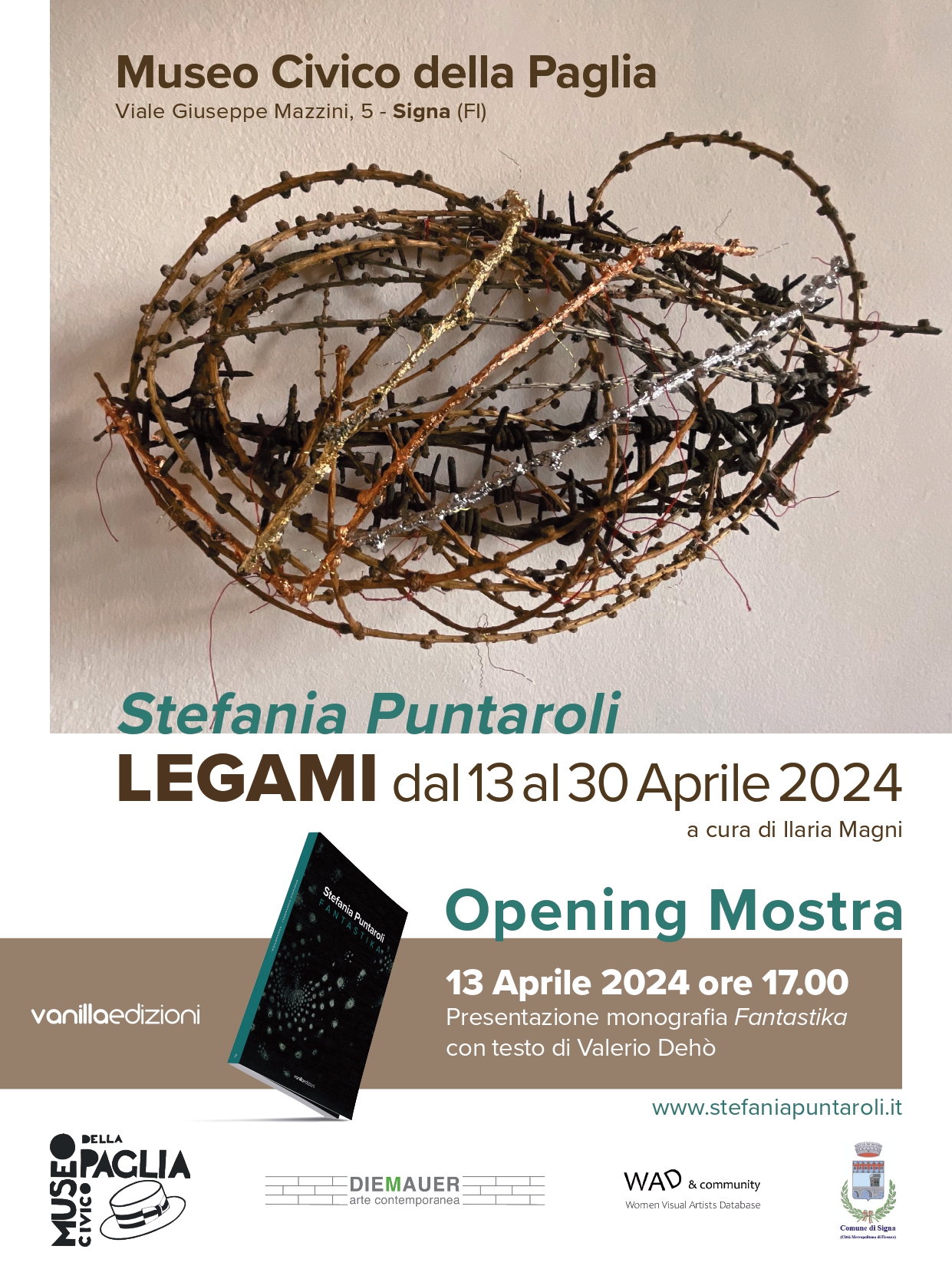
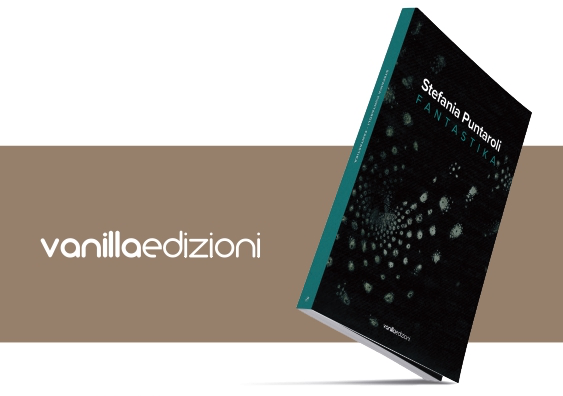
Compila il form per richiedere una copia della monografia a prezzo scontato
